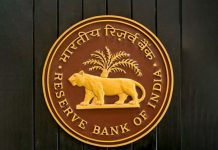HOW TO STAY BULLISH WITHOUT SURPRISES?
The sugar futures market in NY closed out this Friday with July/2023 at 25.41 cents per pound, after having reached the minimum price of 24.61 cents per pound, with a significant drop on Thursday, along with a trading volume equivalent to more than the double of the ordinary days.
During the week the market reported the trading of an extraordinary lot of almost 20,000 puts with the exercise price of 22 cents per pound for October/2023. In the traders’ view, a volume this big stands a great chance of having the speculative funds, which can be foreseeing a sugar price adjustment, as a key player.
Over the week, sugar in NY lost 6 dollars per ton on average for the months that correspond to the Center-South 2023/2024 crop, while the two next crops had a positive average fluctuation of 4.30 dollars per ton for the 2024/2025 crop, and 6.60 dollars per ton for the 2025/2026 crop.
UNICA published the numbers about the production in the first two weeks of May and they show a 24% growth in sugarcane production against the same period last year. ATR also showed a positive fluctuation of 0.61% against last year. The mix continues strongly swinging to sugar with 45.6% versus 38.5% last crop. São Paulo state shows a 34% growth in sugarcane production, while the other states show a 13% growth on average.
In the accumulated of the crop year, sugar production grew 48%, anhydrous ethanol 76% while hydrous shrank almost 5%. The market perception of more sugar and less hydrous helped with the advance of CBIO price traded at the Brazilian Exchange B3, reaching R$136 per ton, which corresponds to an additional of about 70 points in hydrous price – a little help for a product that trades with a discount of almost 10 cents per pound against sugar in NY. Today hydrous make mills lose at least 60 dollars per ton equivalent sugar.
In the yearly accumulated, the so-called soft commodities led the positive performance ranking. Orange juice went up 43%, sugar 27%, cocoa 15% followed by coffee which increased 8%. As for the drops, they are led by the energy market, such as natural gas, which sank 46%, diesel 28% and oil 10%.
A Manhattan broker noted that for several times during the sugar session in NY, with no paper activity, the market shows unstable movements which point to being caused by computer negotiations, algorithms, mathematical models, in a true duel between PCs. Meanwhile, we human beings keep coming up with narratives to justify these fluctuations. In general, we follow the herd of bulls or bears.
The non-index funds (speculative) must still be long by at least 200,000 contracts. As it occurs in similar situations to this one we find ourselves in, when we have commodities that have appreciated a lot on one side and those that have melted on the other, the funds are far too quick on this terrain and – as seen previously – nothing prevents them from suddenly changing hands liquidating what is overvalued and buying what is undervalued. A recovery of the economy globally can encourage the swing in positions, like selling sugar and buying energy. We have seen that before.
Curiously enough, we have noticed that the greater the volatility presented by the market is, the smaller the volume traded in NY futures seems to be. The period we analyzed showed an interesting inverse correlation close to -0.75. Does high volatility push away the trader?
I believe the funds will try to roll over their long positions to the longer expirations. The advantage in their portfolio will be impressive. The average of the NY closings corresponding to the Center-South crops shows that the 2024/2025 crop is at 60 dollars cheaper per ton than this year’s crop. And the 2025/2026 crop, another 60 dollars cheaper per ton. That is, the market shows that sugar is worth 120 dollars less per ton two years from now. Settling the huge long sugar positions now, which present with a gigantic profit, and repurchasing the contracts with future maturities, will generate a stunning result for the speculative funds.
The mills should seriously reflect on the opportunities the market is showing them. Everything seems to move towards a good crop in the Center-South, with lots of sugarcane and excellent yield; India estimates that the monsoon season will produce the adequate volume of rain. If everything follows the normal pace, without any climate problems, we will have produced about 80% of sugarcane estimated in the year by next October, while the Indian production estimates will start sprouting on the market. The favorable combination justifies the purchase of the 20,000 puts mentioned above.
The mills estimate that the cost of sugar production this year won’t have any negative surprises. As we have said before, there will be more care with the sugarcane field for 2024/2025 crop since the fertilizers and chemicals are cheaper and there is money left. The growth of sugarcane production for the 2024/2025 crop might be significant. And everything leads us to believe that the interest rates in Brazil should suffer a reduction, while they go up abroad and make spread narrow, affecting the real curve along the time. In short, there will be fewer real along the curve against the dollar. And after all is said and done, dear readers, you believe that the price in real per ton might go up?
To read the previous episodes of World Sugar Market – Weekly Comment, click here
To get in touch with Mr. Arnaldo, write on arnaldo@archerconsulting.com.br












